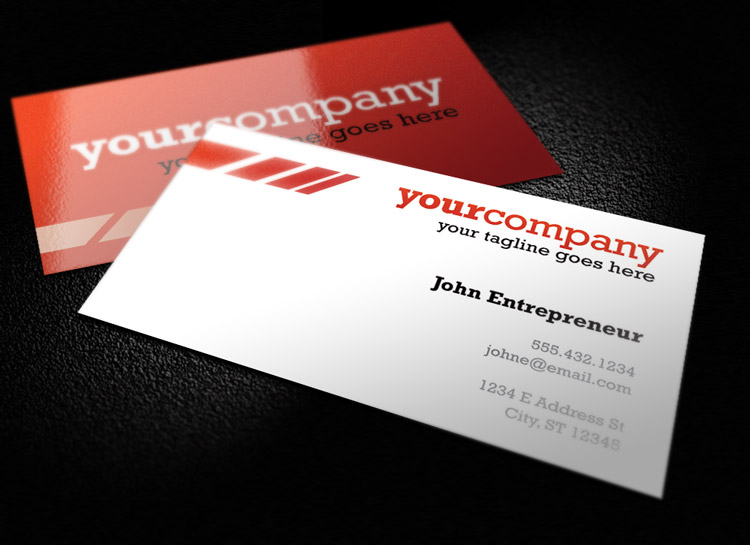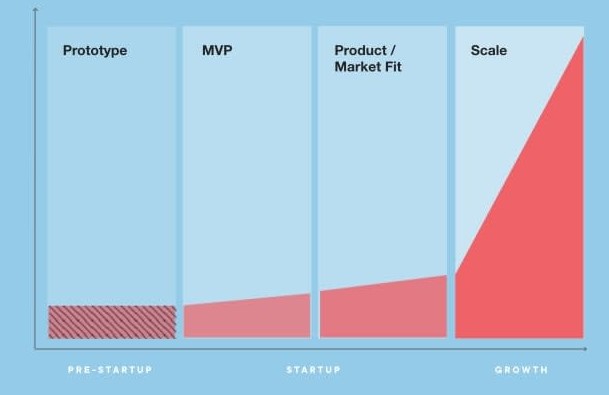The Lean Startup was published by Eric Ries 10 years ago in 2011: Happy birthday! How did it fare across time? In my opinion, it hasn’t aged a bit. It’s still utterly accurate, so clear-cut phrased that you might think the lean startup approach goes without saying.
Make no mistakes though: once the necessity of testing business model hypothesis and capturing validated learnings is appropriated by entrepreneurs, spotting the right short experiments, embedding innovation accounting into product design, analyzing, and iterating wisely (improve or pivot?) toward sustainable growth, remain a tough partition!
The last part of the book related to acceleration, growth, and innovation, seems to me less emphasized in innovation articles. It targets scale-up and corporations to renew the engine of growth, and I found it very accurate to help corporate innovation succeed.
Getting out of innovation theater
I’ve extracted a few punch lines from the book to sum-up these challenges and overview the essence of the Lean Startup mechanics. For those who have read the book, it’s a practical rehearsal. For those who didn’t, it’s a substantial introduction which will get you away from lures and innovation theater! Titles in italic that separate the chapters are my personal synthesis.

In addition to the chapter related to ‘incubating innovation teams within the context of an established company’, you will find learnings on corporate innovation in the book Scaling-up Corporate Startups by Frank Mattes and Ralph-Christian Ohr which develops guidelines to transition a corporate startup into substantial business. Corporate entrepreneurs face the double challenge of catering external and internal customers. Crossing with my digital experience, I summarized some key check-points into the Scale-Up Canvas, a simple tool for corporate entrepreneurs who want to scale!
Without further due, let’s start with the first chapter of the book.
Vision: start, define, learn, experiment
Entrepreneurship and innovation are management disciplines, not just ideation fun work.
In the first startup I (=Eric ries) cofounded, it had seemed we were doing everything right: we had a great product, a brilliant team, amazing technology, and the right idea at the right time. And we really were on to something. But despite a promising idea, we were nonetheless doomed from day one, because we did not know the process we would need to use to turn our product insights into a great company.
The grim reality is that most startups fail. Most new products are not successful. Most new ventures do not live up to their potential.
Startup success is not a consequence of good genes or being in the right place at the right time. Startup success can be engineered by following the right process, which means it can be learned, which means it can be taught. Entrepreneurship is a kind of management.
Entrepreneurship is management. A startup is an institution, not just a product, and so it requires a new kind of management specifically geared to its context of extreme uncertainty. In fact, as I will argue later, I believe “entrepreneur” should be considered a job title in all modern companies that depend on innovation for their future growth.
Entrepreneurship requires a managerial discipline to harness the entrepreneurial opportunity we have been given. Innovation discipline should be shared by practicing entrepreneurs, AND middle managers, AND senior leaders.

Entrepreneurs are everywhere. You don’t have to work in a garage to be in a startup. The concept of entrepreneurship includes anyone who works within my definition of a startup: a human institution designed to create new products and services under conditions of extreme uncertainty.
The real issue is not with (corporate) entrepreneurs and innovators who love the chance to quickly get their baby out into the market: the issue is is with the leaders and the middle managers. There are many business leaders who have been successful because of analysis. They think they’re analysts, and their job is to do great planning and analyzing and have a plan.
I believe a company’s only sustainable path to long-term economic growth is to build an “innovation factory” that uses Lean Startup techniques to create disruptive innovations on a continuous basis.
Innovation is a bottoms-up, decentralized, and unpredictable thing, but that doesn’t mean it cannot be managed. It can, but to do so requires a new management discipline, one that needs to be mastered not just by practicing entrepreneurs seeking to build the next big thing but also by the people who support them, nurture them, and hold them accountable. In other words, cultivating entrepreneurship is the responsibility of senior management.
Leadership requires creating conditions that enable employees to do the kinds of experimentation that entrepreneurship requires. It’s moving leaders from playing Caesar with their thumbs up and down on every idea to—instead—putting in the culture and the systems so that teams can move and innovate at the speed of the experimentation system.

Good innovation creates validated learning, and eliminates waste
In another startup, instead of spending years perfecting our technology, we build a minimum viable product, an early product that is terrible, full of bugs and crash-your-computer-yes-really stability problems. Then we ship it to customers way before it’s ready. And we charge money for it. After securing initial customers, we change the product constantly—much too fast by traditional standards—shipping new versions of our product dozens of times every single day. We really did have customers in those early days—true visionary early adopters—and we often talked to them and asked for their feedback. But we emphatically did not do what they said. We viewed their input as only one source of information about our product and overall vision. In fact, we were much more likely to run experiments on our customers than we were to cater to their whims. This approach we pioneered has become the basis for a new movement of entrepreneurs around the world: it’s called the Lean Startup.
Lean thinking is about eliminating waste and developing value for the customer. My hope all along is to find ways to eliminate the tremendous waste I saw all around me: startups that built products nobody wanted, new products pulled from the shelves, countless dreams unrealized.
Learning to see waste and then systematically eliminate it has allowed lean companies such as Toyota to dominate entire industries.
Lean thinking defines value as providing benefit to the customer; anything else is waste.

Learning is the essential unit of progress for startups. Validated learning. Startups exist not just to make stuff, make money, or even serve customers. They exist to learn how to build a sustainable business. This learning can be validated scientifically by running frequent experiments that allow entrepreneurs to test each element of their vision.
It’s easy to kid yourself about what you think customers want. It’s also easy to learn things that are completely irrelevant. Thus, validated learning is backed up by empirical data collected from real customers.
In the Lean Startup model, every product, every feature, every marketing campaign – everything a startup does – is understood to be an experiment designed to achieve validated learning.
Smart entrepreneurs master the art of short and relevant experiments
A true experiment follows the scientific method. It begins with a clear hypothesis that makes predictions about what is supposed to happen (value hypothesis, growth hypothesis). It then tests those predictions empirically. Experimentation is guided by the startup’s vision. The goal of every startup experiment is to discover how to build a sustainable business around that vision.
Experiment can be conducted in a matter of weeks, less than one-tenth the time of the traditional strategic planning process. Also, it can happen in parallel with strategic planning while the plan is still being formulated. Even when experiments produce a negative result, those failures prove instructive and can influence the strategy.

In the Lean Startup model, an experiment is more than just a theoretical inquiry; it is also a first product. If this experiment is successful, it allows the manager to get started with his or her campaign: enlisting early adopters, adding users to each further experiment or iteration, and eventually starting to build a product. By the time that product is ready to be distributed widely, it will already have established customers. (= co-creating with a user community)
Successful products solve elegantly a user problem
Before developing a product, validate:
- Do consumers recognize that they have the problem you are trying to solve?
- If there was a solution, would they buy it?
- Would they buy it from us?
- Can we build a solution for that problem?
Success is not delivering a feature; success is learning how to solve the customer’s problem.
Steer: leap, test, measure, pivot
Good innovation finds out what really customers love through fast loops of Build-Measure-Learn actions
Build-Measure-Learn. The fundamental activity of a startup is to turn ideas into products, measure how customers respond, and then learn whether to pivot or persevere. All successful startup processes should be geared to accelerate that feedback loop.
We need to focus our energies on minimizing the total time through this feedback loop. This is the essence of steering a startup.

Once clear on the leap-of-faith assumptions (they are called leaps-of-faith precisely because the success of the entire venture rests on them, like value and growth hypothesis), the first step is to enter the Build phase as quickly as possible with a minimum viable product (MVP). The MVP is that version of the product that enables a full turn of the Build-Measure-Learn loop with a minimum amount of effort and the least amount of development time.
The MVP is not necessarily the smallest product imaginable, though; it is simply the fastest way to get through the Build-Measure-Learn feedback loop with the minimum amount of effort.
Actual MVP techniques are the viral video MVP from Dropbox, the concierge MVP from Food on the table recipes, the wizard of Oz from Zappos online shoes and the 2 to 4 weeks-effort-prototypes and people behind the curtain at Aardvark virtual assistant (check-out 10 top 10 MVP examples).

As you consider building your own minimum viable product, let this simple rule suffice: remove any feature, process, or effort that does not contribute directly to the learning you seek.
Get out of the building (Steve Blank, customer development theory) or genchi gembutsu: you cannot be sure you really understand any part of any business problem unless you go and see for yourself firsthand. It is unacceptable to take anything for granted or to rely on the reports of others.
Good innovation creates value for customers and transforms it into business, finding synthesis between vision and what customers love, through Build-Measure-Learn loop
Lean User Experience (Lean UX) recognizes that the customer archetype is a hypothesis, not a fact. The customer profile should be considered provisional until the strategy has shown via validated learning that we can serve this type of customer in a sustainable way.
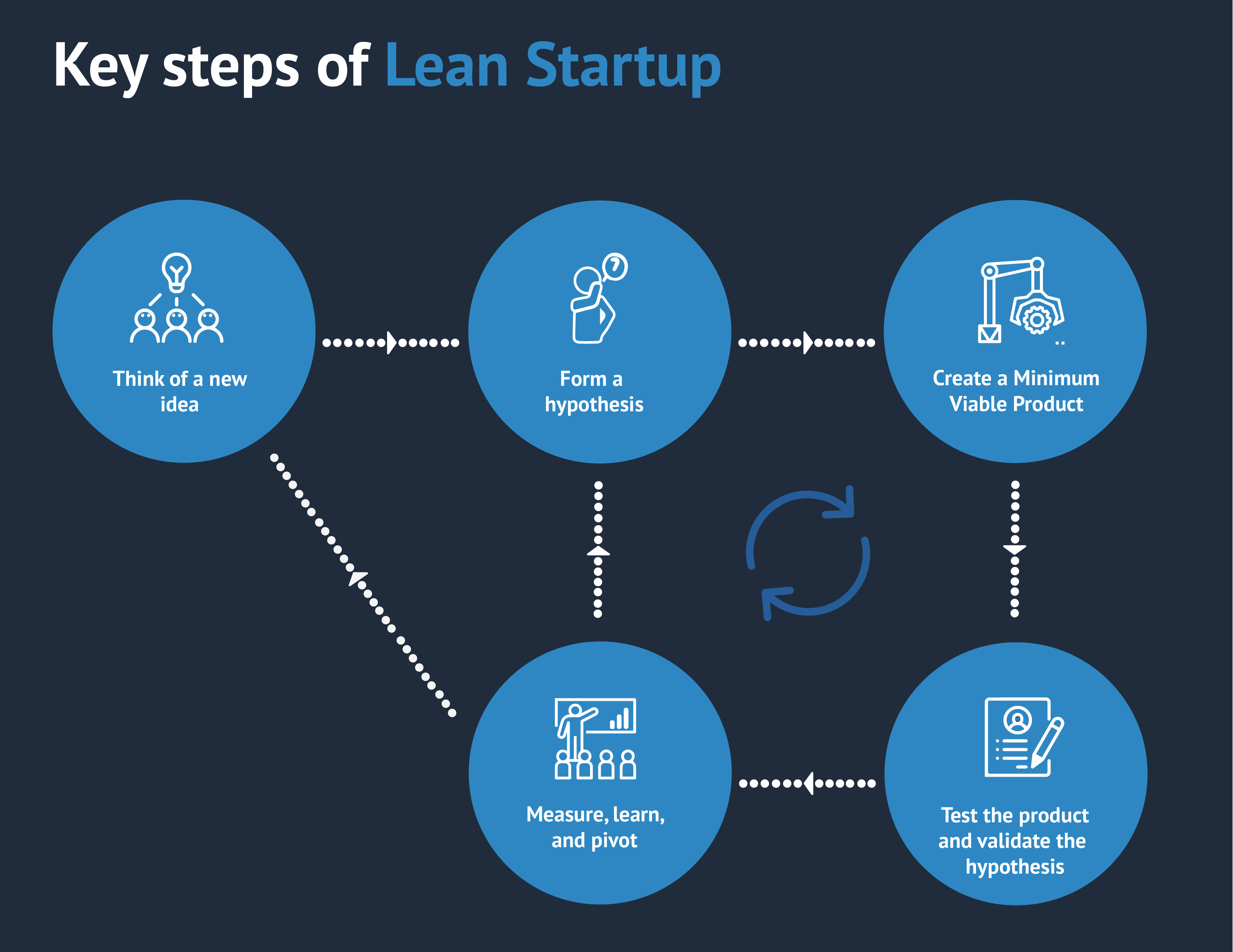
Every new version of a product, every new feature, and every new marketing program is an attempt to improve this engine of growth.
Products change constantly through the process of optimization, what I call tuning the engine. Less frequently, the strategy may have to change (called a pivot). However, the overarching vision rarely changes. Entrepreneurs are committed to seeing the startup through to that destination. Every setback is an opportunity for learning how to get where they want to go.
Although we write the feedback loop as Build-Measure-Learn because the activities happen in that order, our planning really works in the reverse order: we figure out what we need to learn, use innovation accounting to figure out what we need to measure to know if we are gaining validated learning, and then figure out what product we need to build to run that experiment and get that measurement.
Measuring innovation progress requires appropriate KPIs linked to value creation, building the right thing, not budget and timeline
Innovation accounting. To improve entrepreneurial outcomes and hold innovators accountable, we need to focus on the boring stuff: how to measure progress, how to set up milestones, and how to prioritize work. This requires a new kind of accounting designed for startups—and the people who hold them accountable.
The Lean Startup asks people to start measuring their productivity differently. Because startups often accidentally build something nobody wants, it doesn’t matter much if they do it on time and on budget. The goal of a startup is to figure out the right thing to build—the thing customers want and will pay for—as quickly as possible.
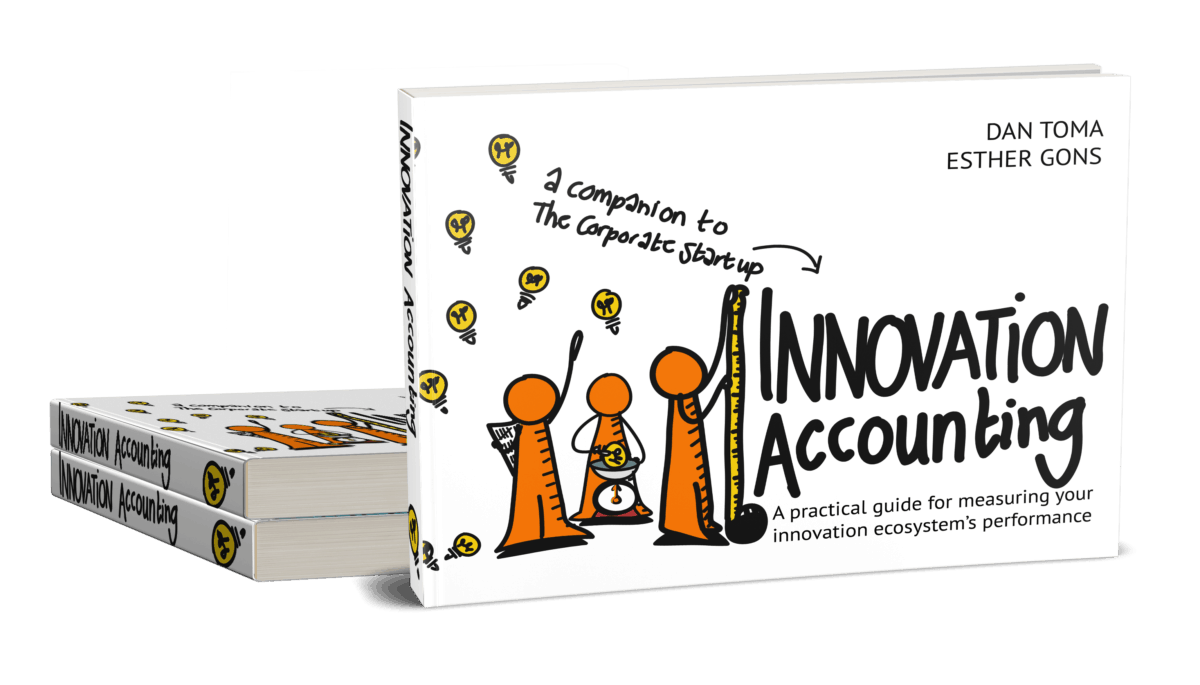
It is also the right way to think about productivity and metrics in a startup: not in terms of how much stuff we are building but in terms of how much validated learning we’re getting for our efforts. Thus we are working, not harder but smarter, aligned with our customers’ real needs. This is true startup productivity: systematically figuring out the right things to build.
It’s not enough to design the product: one has also to design devices to capture the right metrics showing that customers love the product, including feature-validation and metrics calculation at the outset of the design
Once the baseline has been established with MVP, the startup can work toward the second learning milestone: tuning the engine to improve the growth model. If we’re not moving the drivers of our business model and converging to the ideal business plan, we’re not making progress. That becomes a sure sign that it’s time to pivot.
Innovation accounting will not work if a startup is being misled by these kinds of vanity metrics: gross number of customers and so on. The alternative is the kind of metrics we use to judge our business and our learning milestones, what I call actionable metrics. Furthermore actionable (when cause and effect is clearly understood), accessible, and auditable.
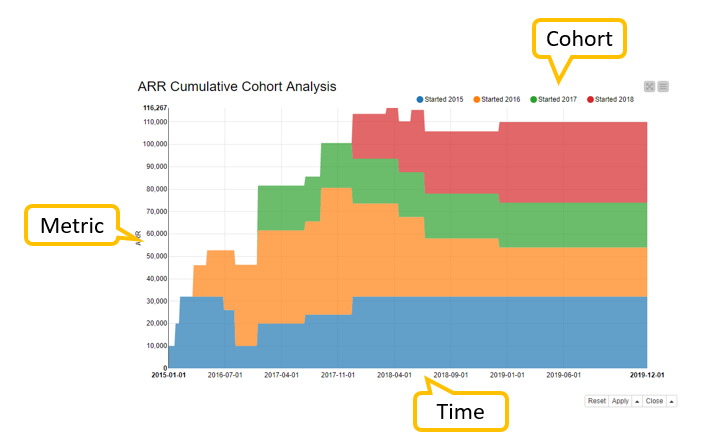
Instead of looking at gross metrics, switch to cohort-based metrics, and instead of looking for cause-and-effect relationships after the fact, launch each new feature as a true split-test experiment (A/B testing). Although working with split tests seems to be more difficult because it requires extra accounting and metrics to keep track of each variation, it almost always saves tremendous amounts of time in the long run by eliminating work that doesn’t matter to customers.
Consider metrics calculation and reporting data and its infrastructure to be part of the product, and owned by the product development team.
Deciding when to pivot and when to persevere is based on innovation accounting combined with human elements: vision, intuition, judgment, courage
A pivot requires that we keep one foot rooted in what we’ve learned so far, while making a fundamental change in strategy in order to seek even greater validated learning. Pivot is a specific change designed to test a new fundamental hypothesis about the product, business model, and engine of growth.
Pivots come in different flavors: customer segment pivot, product features pivot, platform pivot, business architecture pivot, value capture pivot, engine of growth pivot (viral, sticky, paid), channel pivot, technology pivot.
Seasoned entrepreneurs often speak of the runway that their startup has left: the amount of time remaining in which a startup must either achieve lift-off or fail. This usually is defined as the remaining cash in the bank divided by the monthly burn rate. The true measure of runway is how many pivots a startup has left: the number of opportunities it has to make a fundamental change to its business strategy.
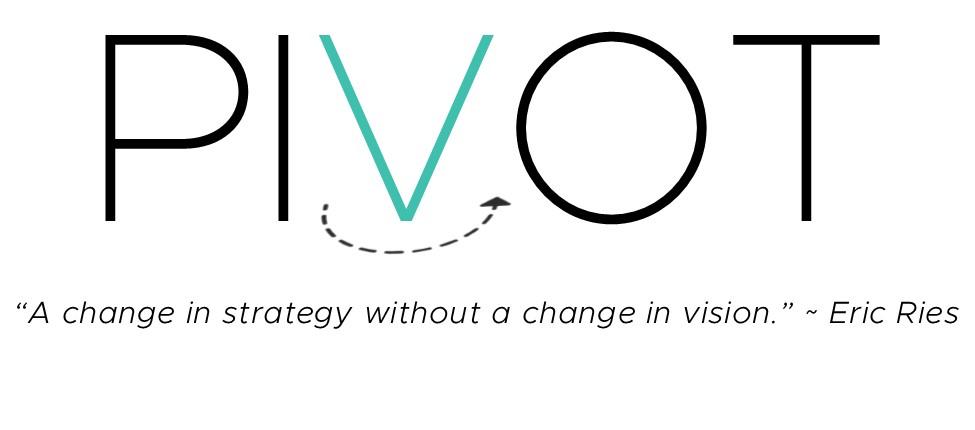
Accelerate: batch, grow, adapt, innovate
We have learned to steer when moving slowly. Now we must learn to race. Laying a solid foundation is only the first step toward our real destination: acceleration.
Conduct your product developments in small batches (small teams hit the nail!)
Lean Startups practice just-in-time scalability, conducting product experiments without making massive up-front investments in planning and design.
The small-batch approach produces a finished product every few seconds (‘single-piece flow’), whereas the large batch approach must deliver all the products at once, at the end. Design, develop, and ship new features one at a time, taking advantage of the power of small batches (‘DevOps‘). Check for defects immediately (‘andon cord‘), thus preventing bigger problems later. Complete continuous deployment.

The right way to think about the product development process in a Lean Startup is that it is responding to customers’ pull requests in the form of experiments that need to be run.
Sort out your engine of growth to reach product/market fit
Focus on one engine of growth at a time: stickiness (retention, loyalty vs churn); virality (word of mouth, NPS, commission, viral coefficient>1); paid ( lifetime value vs acquisition cost, driven by outbound sales, marketing, and ad costs).
Product/market fit describes the moment when a startup finally finds a widespread set of customers that resonate with its product. Each engine growth has a unique set of metrics (working in tandem with the innovation accounting model) that can be used to evaluate whether a startup is on the verge of achieving product/market.
Shape an organizational structure, culture, and discipline ready to adapt to successive changes
Lean Startups build an adaptive organization by investing in the right amount of process to keep teams nimble as they grow.
We wound up building a training program that was so good, new hires were productive on their first day of employment. The training program evolved organically out of a methodical approach to evolving our own process: I call this building an adaptive organization, one that automatically adjusts its process and performance to current conditions.
Use the Five Whys system to make incremental investments and evolve a startup’s processes gradually. The core idea of Five Whys is to uncover the root problem and correct it, tieing proportional investments directly to the prevention of the most problematic symptoms.
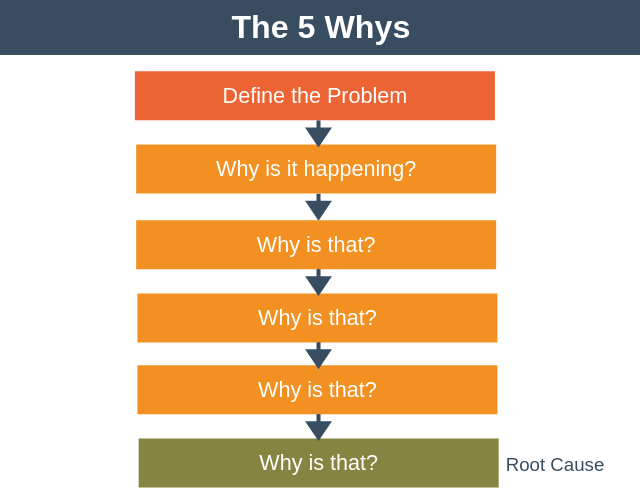
The imperative to innovate is unrelenting, and demands accurate organization
Every engine of growth eventually runs out of gas. Companies need to manage a portfolio of activities, simultaneously tuning their engine of growth and developing new sources of growth for when that engine inevitably runs its course.
Successful startups keep their entrepreneurial DNA even as they mature. Today’s companies must learn to master a management portfolio of sustainable and disruptive innovation.
Internal or external, startup teams require three structural attributes: scarce but secure crossfunctional resources, independent authority to develop their business, and a personal stake in the outcome, not necessarily financial but giving a true sense of ownership (the name on the door, the shusa).
Corporate innovation is harmed by fear of endangering the current business, battle of opinions (instead of data-based decisions) and budget politics; even a nocive atmosphere can appear where each advocate senses that he’s about to be ambushed. This can lead to misguided move of hiding the innovation team.
Creating a platform for experimentation is protecting the parent organization, while sustaining innovation culture overtime (organization is tied with culture). This innovation sandbox, contains the impact of the new innovation but does not constrain the methods of the startup team, monitoring standard actionable metrics and innovation accounting for each experiment, iterating quickly in small batches. Operating in this framework, internal teams essentially act as startups.

Entrepreneurship should be considered a viable career path for innovators inside large organizations, with a business card that says simply “Entrepreneur” under the name.
